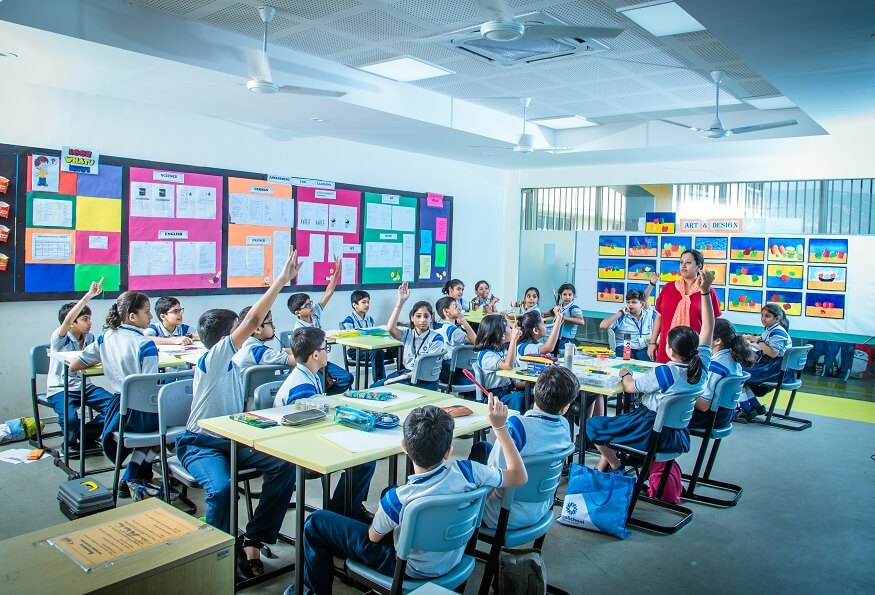When a person can accurately receive and interpret messages in the process of communication, this is called the ability to listen. Without the ability to listen effectively, messages could easily be misunderstood. Hence, listening is key to all effective communication. Today, we will discuss active listening skills and learn about active listening techniques for kids. We will also be talking about some great examples of active listening so we may know the importance and benefits of active listening.
Active listening is preparing to listen. It is important to observe verbal and nonverbal messages too, and then provide appropriate feedback for the sole purpose of showing attentiveness to the message being presented. This form of listening reciprocates understanding between the speaker and the listener.
Active listening skill involves a communication that goes beyond simply hearing the words that another person speaks. It helps to build trust and understand. Communication empowers us to offer support and empathy. Active listening seeks to understand rather than reply, unlike critical listening. The goal is for the other person to be heard, feel validated, and be inspired to solve their problems.
There are various ways to improve active listening skills. One example of active listening is to watch skilled interviewers on talk and news shows. One can also research active listening techniques for kids online and practice it in daily conversations, always take note of the speakers’ reactions, and look for areas of improvement.
The importance and the benefit of active listening is a way of responding to another person and improving mutual understanding. It is a mandatory step to defuse a situation and seek solutions to any problem. Mentioned below are some examples of active listening skills:
- Demonstrating concern.
- Paraphrasing to show understanding. Always show that you are listening.
- Use nonverbal cues that portray understanding, such as nodding, eye contact, and leaning forward.
- Use brief verbal affirmations such as “I see,” “I understand,” “Sure enough,” “Thank you,” or “I know.”
- Pay attention. The speaker should have your undivided attention and acknowledge the message received.
- Provide feedback. As that will help you clear any doubts as well as help the speaker.
- Defer judgment.
- Respond appropriately.
The above-mentioned tips and active listening techniques for kids will help you listen to the speaker well. Active listening needs concentration and when one is fully aware of what is being said rather than trying to hear what the person is trying to convey. To acquire information is the goal of active listening. Before responding, listen to understand people and the situation.
So one may ask, what is active and passive listening? Well, a one-way communication where the receiver does not give any feedback or have any questions and may or may not understand the sender’s message at all is passive listening. Active listening includes responses that demonstrate that you understand what the other person is trying to say.
Active listening is the most effective and highest level of listening. It is a great communication skill with an effective strategy. Listening carefully while showing interest and not interrupting is how one can respect the speaker. Mentioned below are some types of listening:
- Informational listening.
- Discriminative listening.
- Biased listening.
- Sympathetic listening.
- Comprehensive listening.
- Empathetic or therapeutic listening.
- Critical listening.
- Deep listening.
Active listening means listening to someone, knowing the goal is to understand, respond to, and remember what they are saying. The listener must set aside any judgments to truly focus on what the other person has to say in active listening.
The 3 R’s of active listening are:
- Respect: Active listening begins with the most common courtesies.
- Remember: Before things go in one ear and out the other, take a moment to jot notes during your conversation.
- Review: Always wrap up the conversation or presentation with a summary, an action plan, the next steps, and other actions that may be needed.
The 3 P’s of active listening are:
- Presence listening.
- Perspective listening.
- Personas listening.
There are five stages of the listening process, which are receiving, understanding, evaluating, remembering, and responding. Mentioned below are some tips to portray active listening.
- Always face the speaker and make eye contact.
- “Listen” to verbal and nonverbal cues.
- Never interrupt the speaker, always seek permission.
- Always listen without judging or jumping to conclusions.
- Do not presume what the speaker will say next.
- Never impose your opinions or solutions, gently give feedback if needed.
- Always stay focused.
- Ask questions to clear doubts.
So now that we know so much about active listening, one may ask why it is called active listening. Well, ‘Active listening’ means, exactly as its name suggests, actively listening. It is to fully concentrate on what is being said rather than simply ‘hearing’ the speaker. Active listening involves attention with all the senses.
The importance and benefits of active listening is such that it builds trust between people, be it colleagues, friends, relatives, and it is a communication skill that empowers you to make informed decisions, resolve issues, and drive yourself towards success. Based on awareness and absorption of all the information necessary to achieve this, one can have a skill set because it encourages openness, honesty, and success. When you pay attention to the speaker, you show that person they are being heard, thus building trust and making that person feel like their words matter to you.
Active listening is the foundation of successful communication. It can promote a feeling of value and being heard, or create trust, strengthen relationships, and make it a valuable space for skills. Remember to always do the following to portray active listening skills
- Paraphrase and reflect what has been said.
- Ask open-ended questions.
- Ask specific probing questions.
- Use short verbal affirmations.
- Display empathy.
- Share similar experiences.
- Recall previously shared information.
- Be fully present in the conversation.
- Show interest by practicing positive eye contact.
- Listen to understand rather than to respond.
Mentioned above were some important examples of active listening skills that will help you build a successful interaction with anyone. To understand the true meaning of active listening, follow the below-mentioned tips. These tips will help you ensure that you hear the other person, and that the other person knows you are listening to what they say.
- Give the speaker undivided attention and acknowledge the message received, pay attention.
- Show that you are listening by using different verbal and nonverbal nods and by asking appropriate questions.
- Always be open to give and take positive and negative feedback.
- Ensure that the responses are appropriate to the topic and not just a waste of time.
Also Read: Importance of a Growth Mindset in Your Teaching
At EuroSchool, we ensure that every student has enough practice in all types of communication. And we ensure that active listening is considered and practiced with priority. We give students the opportunity to have open conversations and dialogues so that they have the best of both communications, public speaking, and active listening. We ensure that they learn that it is necessary to always respect the speaker no matter where and what the discussion is all about.











